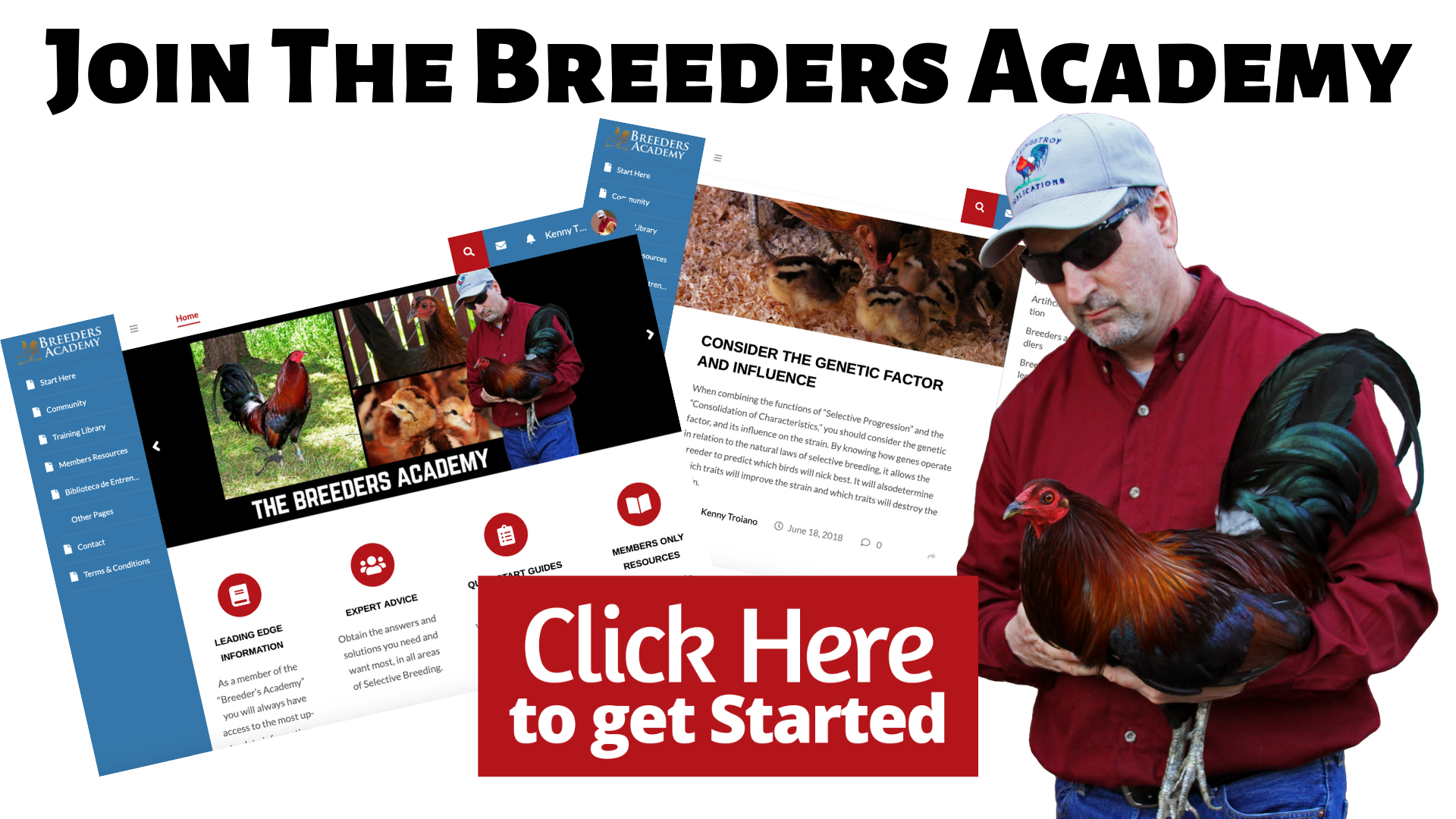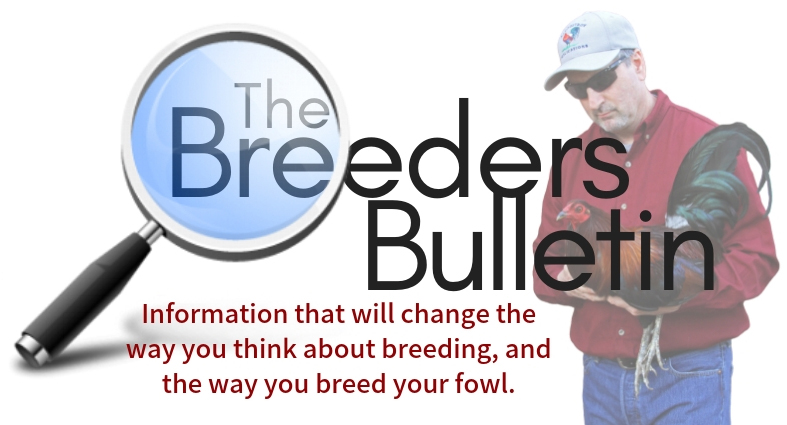ON THE BREEDING OF OUR FOWL
By Kenny Troiano
Copyright © 2018by Kenny Troiano/Maximus Troy Publications
A change in environment (location, climate, soil, and food source) has the power to create many biological variations, first, in the form of phenotype variants, and eventually affecting genotype. This is especially true when it comes to the characteristics of our fowl. For example, a new environmental condition can change the way a bird develops, and in time, those changes can become permanent. A new environment can also create genetically induced variations, such as sports and mutations. While some of these changes are beneficial, there are many that can be detrimental to the strain.
While genetic changes tend to be slow, changes caused by a new environment can be quite unexpected and abrupt. Have you ever wondered how the fowl of great breeders never change, even after decades of breeding, or only experience subtle changes? But when these same fowl are moved to a new environment or location, their offspring almost look and act like completely different fowl?
As you will see, there is more at work than simple genetics, or hereditary influences. Their environment has a huge effect on their overall development and how they evolve as a family or strain.
How influential is the environment?Look how little the Wild Junglefowl of South East Asia has changed in the last 5,000 years. Under the care of Mother Nature the changes were very slow. But in the hands of man, they have changed dramatically. Junglefowl are typically small and compact little birds, and come in just a handful of color variations. Modern day fowl are much larger in carriage and higher in station of leg. There is a multitude of breeds, and numerous varieties (plumage color and special features, such as muffs and tassels) within many of the breeds that are not seen in Junglefowl. In comparison, Junglefowl are quite different than our modern day domestic breeds. The question is, how many of those changes can be attributed to selective breeding, or to a change in their environment?
There are many conditions that are needed for a genetic trait to become a dominant factor, but all that is needed for a trait, which is produced by a simple change in the environment to take hold, is for the conditions of the new environment to be favorable for the trait. In other words, if the trait adapts well to the new environment, that trait becomes a new dominant factor. And, if selected for many generations, it becomes an influential factor for future generations. For instance, if the wings are becoming longer and stronger, and you, the breeder, continue to select for that trait, longer and stronger wings will eventually become a prominent factor throughout the family, even if this trait doesn’t exist in the original (seed) fowl.
How does this relate to you and I?When buying fowl from a breeder, who lives in a different geographical location than yourself, you should expect some phenotypical changes from the progeny.
For example, if a breeder on the East Coast were to receive a trio of fowl from another breeder, located on the West Coast, the trio of birds, after becoming acclimated to its new environment (location, climate, soil, and food source) may begin to throw offspring with strange and questionable characteristics, ones the original breeder never new were even there. If the characteristics are favorable, all is well. But there is a strong possibility unfavorable characteristics may arise.
Usually, when this happens, the buyer feels cheated and quickly labels the seller, a “crook.” Although you should watch out for peddlers, selling bogus and substandard fowl, there are some fine breeders out there, who breed and raise high quality fowl. Do your research, get references, and select the best fowl possible. Then trust that the fowl you purchase has, within its gene pool, the power and potential to progress into the fowl you desire. Deal with expectant traits as they arise. Improve your ability to select and breed, and cull any progeny that do not represent your idea of perfection. In time you will have a strain that you can be proud of.
The truth is, a family of closely related birds will often produce offspring with varying results when moved to a new environment. Sometimes this happens expectantly and abruptly; sometimes it takes a few generations. In time, even though they come from the same family of birds, they will change and look different from the family that they originated from. Although selection has a lot to do with it, the effect of the environment is a powerful influence.

